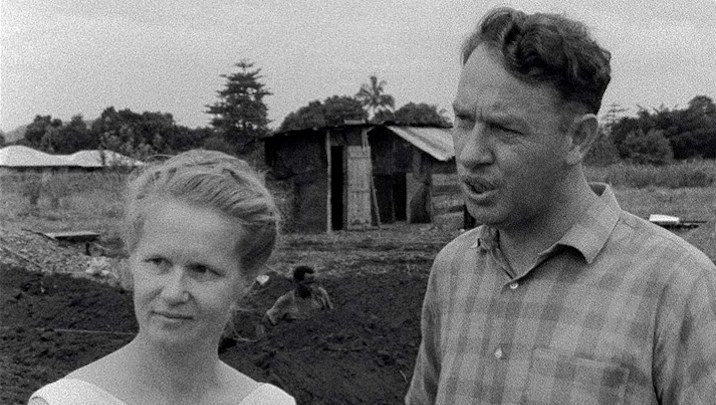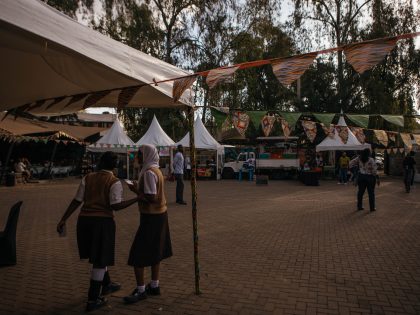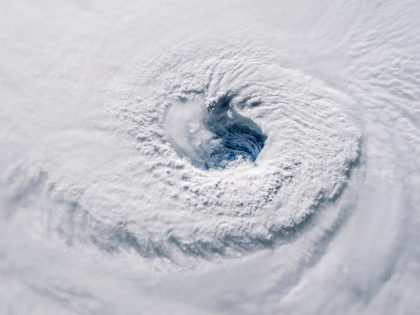A Postmodern Bricolage
What we learn from the film “Concerning Violence,” about Franz Fanon’s writings and ideas

Still from "Concerning Violence."
Franz Fanon is a towering figure in the modern history of thinking about race, human emancipation and democracy in post-colonial states, and radical psychiatric practice. Born in 1925 in Martinique, he died in 1961 in the United States, and was buried in Algeria, a country in which he had lived and worked during the anti-colonial war of liberation. Frantz Fanon’s short rich life weaved together two preoccupations: professional psychiatry and revolutionary praxis. Working in unison, each was put to the service of fighting human suffering and racism and to the goal of post-colonial liberation. Fanon’s contempt for the post-colonial national bourgeoisie across much of Africa was withering and unreconstructed. His writing on the violence of colonial racism and on the productive role of violence in human emancipation was as controversial when The Wretched of the Earth first appeared in 1961 as it is today. Daring to produce a documentary – “Concerning Violence: Nine Scenes from Anti-Imperialistic Self-Defense” – based loosely on this book and Fanon’s ideas, and to take the topic of violence head on is either brave or foolish. Or both. Using archival footage from the wars of liberation in Angola, Mozambique and Rhodesia, Swedish director Göran Olsson has his hands full. To what effect? — Michael Watts.

Erin Torkelson: Göran Olsson’s 2014 film Concerning Violence: Nine Scenes from Anti-Imperialistic Self-Defense is a sensitively rendered and deeply disturbing look at Swedish archival footage of anti-colonial warfare, relying on rock-star academics (Gayatri Spivak) and academic rock-stars (Lauryn Hill) to blend image and text, in a postmodern bricolage structured around Frantz Fanon’s The Wretched of the Earth. While I generally enjoyed the film, I am troubled by the premise — laid out clearly in the press packet (and on the IMDB site, box cover, movie poster, etc.) — that the value of this movie is in its archive: alternatively called a ‘new archive of unseen footage’ and an archive of ‘the most daring moments in the struggle for liberation.’
I am left wondering what, exactly, is “new” about this archive? There is plenty of footage of “anti-imperialist self-defense” floating around late night South African TV (with doccies poking fun at “Rhodesians” at country clubs or stories of victims and perpetrators brought together to “reconcile”); there is a horrific corner of the internet where colonial soldiers post films of their murderous devastation throughout Africa (lest we forget mercenaries filmed “kills” in order to be paid); and there have been several archive-based documentaries about African anti-colonial wars in recent years (Cuba: An African Odyssey, a 2007 French documentary film immediately comes to mind). Suggesting that the archive itself is the most important contribution elides the fact that African anti-colonial wars were very recent history and footage of them actually exists. Stressing the value (the never-before-seen-ness) of the archive seems to (once again) place Africa in an awkward pre-history, outside of time, and certainly outside of film. Likewise, why are these scenes the most ‘daring moments in the struggle for liberation’? Surely, that occludes so much bravery and sacrifice across the continent? Considering these questions, it seems to me that what is ‘new’ is that it’s a Swedish archive, and what is ‘daring’ is that is Swedish journalists filming (it says as much in the press packet: “radical Swedish filmmakers” capturing anti-imperialist liberation “firsthand”). In this sense, the movie is self-reflexively Swedish, (re)centering the European subject in anti-colonial struggles in Africa.
Indeed, you can see this Euro-centric perspective throughout the film. It is extremely difficult to watch the (re)enactment of the white, male gaze overlaid with Frantz Fanon’s words — a gaze that is most transparent, most visible and most deeply problematic in a pornographic scene of a beautiful, though mutilated, topless woman, feeding her infant. And while the press packet fesses up to some European ‘paternalism’ and ‘bias,’ it also continually appeals to Sweden’s history of anti-apartheid activism, “material contributions” to the ANC, and “official neutrality.” Olsson’s invocations of the ‘paternalistic’ Sweden and the ‘activist’ Sweden are separated by several paragraphs in the press packet, but I think, our challenge is to see how these statements work together in a discursive formation: how does the second statement (about Sweden’s liberal activism) work to justify, excuse or erase the first (about Sweden’s paternalism and “bias,” often a euphemism for racism)?
This is why having Gayatri Spivak introduce the film is such an interesting choice. In her classic, “Can the Subaltern Speak” she takes Foucault and Deleuze to task for making the Western, European, male intellectual visible and transparent, and thereby occluding the subaltern subject. In many places, the same could be said of this film. Is Göran Olsson asking Gayatri Spivak to absolve him of these very same sins?

Camilla Hawthorne: What I appreciated most about Concerning Violence was that it was not framed as an apologia for The Wretched of the Earth’s infamous first chapter, which is effectively how Homi Bhabha (in his preface to the 2004 Philcox translation) framed his psychoanalytic rejoinder to the narrow readings by Arendt and Sartre that painted Fanon as a “prophet of violence.” Indeed, the documentary goes to great lengths to visually center the originary violence of colonialism, a racialized, everyday violence that is etched into material landscapes and carved into human flesh. I also appreciated Spivak’s thoughtful introduction, which concluded with a frank caveat about the limitations of Fanon for explicitly feminist readings of colonial and anti-colonial violence. Just as Fanon famously “stretched” Marx, she suggests, it is now our task to stretch Fanon.
But upon discussing the doc with Erin, I am also left wondering: what can we make of the documentary’s geographical provenance in a Swedish archive? And why was the footage reassembled and released now? Can this documentary be read against the backdrop of Europe’s complicated and contradictory relationship with postcoloniality as a condition, a relation, and a field of academic inquiry? While it has undoubtedly generated important and reflexive scholarship that challenges the racist myth of European boundedness and homogeneity, the postcolonial turn in Europe has also morphed into either a romanticized, colonial nostalgia (in which colonialism is glossed as cosmopolitanism and multiracial conviviality) or a redirection of scholarly and popular attention to white Europeans in the context of anti-colonial struggles.
We must not lose sight of the fact that this is all happening at a conjuncture when European states are navigating the tensions of inclusion and exclusion and the boundaries of European citizenship as the empire “strikes back” in the form of immigration; in the Nordic countries such as Sweden, known for their bountiful social welfare systems, those on the left have struggled to incorporate a national self-image of progressiveness and openness toward refugees and asylum-seekers with the stark and too-close-to-home realities of virulent racism and xenophobia. A generous take on the documentary can read it as an attempt to situate current struggles over the construction of Europeanness within the context of a broader (and spatially extended) historical, colonial trajectory—as opposed to a “crisis” catalyzed by the arrival of large numbers of postcolonial migrants during the latter half of the twentieth century. On the other hand, however, one could also view Concerning Violence as a sort of attempt at absolution—an effort to displace contemporary reckonings with racism (see: the Swedish racist cake controversy or the work of geographer Allan Pred) as merely aberrational while simultaneously incorporating African anti-colonial struggles into a romantic national Swedish narrative of inclusion and antiracism.
Brittany Meche: I will begin by saying I found something temporally jarring about Göran Olsson’s 2014 film Concerning Violence: Nine Scenes from Anti-Imperialistic Self-Defense. Above and beyond the tinge of Third Worldist nostalgia, something about the timing and the narrative rhythm felt out of step. I locate my unease in the treatment of the title concept, violence. Famed postcolonial theorist Gayatri Spivak opens the movie arguing against a reading of Fanon that presents violence as salvational. Instead, Spivak insists that The Wretched of the Earth is Fanon’s meditation on what happens when people are “reduced to violence.” However, Spivak’s presumed lessening gives me pause, and it seems at odds with the steely narration of songstress Ms. Lauryn Hill. Ms. Hill’s rendering of Fanon’s words as they punctuate these moments of “self-defense” do not bely descent into a hellish resignation. Though, lest I be accused, as Fanon is and was, of heralding violence as divine ascent, I contend that these images of jungle patrols, feckless missionaries, mangled mothers and persistent fighters, are undoubtedly terrestrial—the provenance of neither angel nor demon.
Consequently, where in an analysis of violence as reductive descent is there room for Malcolm X’s defiant political prescription: “By any means necessary”? It is this issue of means and ends that is at the heart of my unease about the temporal rhythm of the film. Sitting in the 21st century and gazing back at the 20th, what are we as viewers to make of this representation of decidedly political violence? Particularly in a moment when violence as a means of resistance has been discredited, not necessarily for its ineffectualness, but because it has become the prized possession of powerful states. The term self-defense in the subtitle of the film recalls Olsson’s critically-acclaimed 2011 project The Black Power Mixtape 1967-1975 about the Black Panther Party for Self-Defense. Still, I am left pondering: to what extent, in the present moment, can oppositional politics be situated within a framework of self-defense? What does self-defense look like amid late-stage racial capitalism and unending wars on terror? When one can be shot in a position of surrender or when “no-fly zones” are used to justify the bombardment of cities and countless civilian deaths, what articulations of defense remain? Ultimately, I am agitated, exasperated and, yet, profoundly humbled by these images of armed black and brown radicals, poised to make history.




















